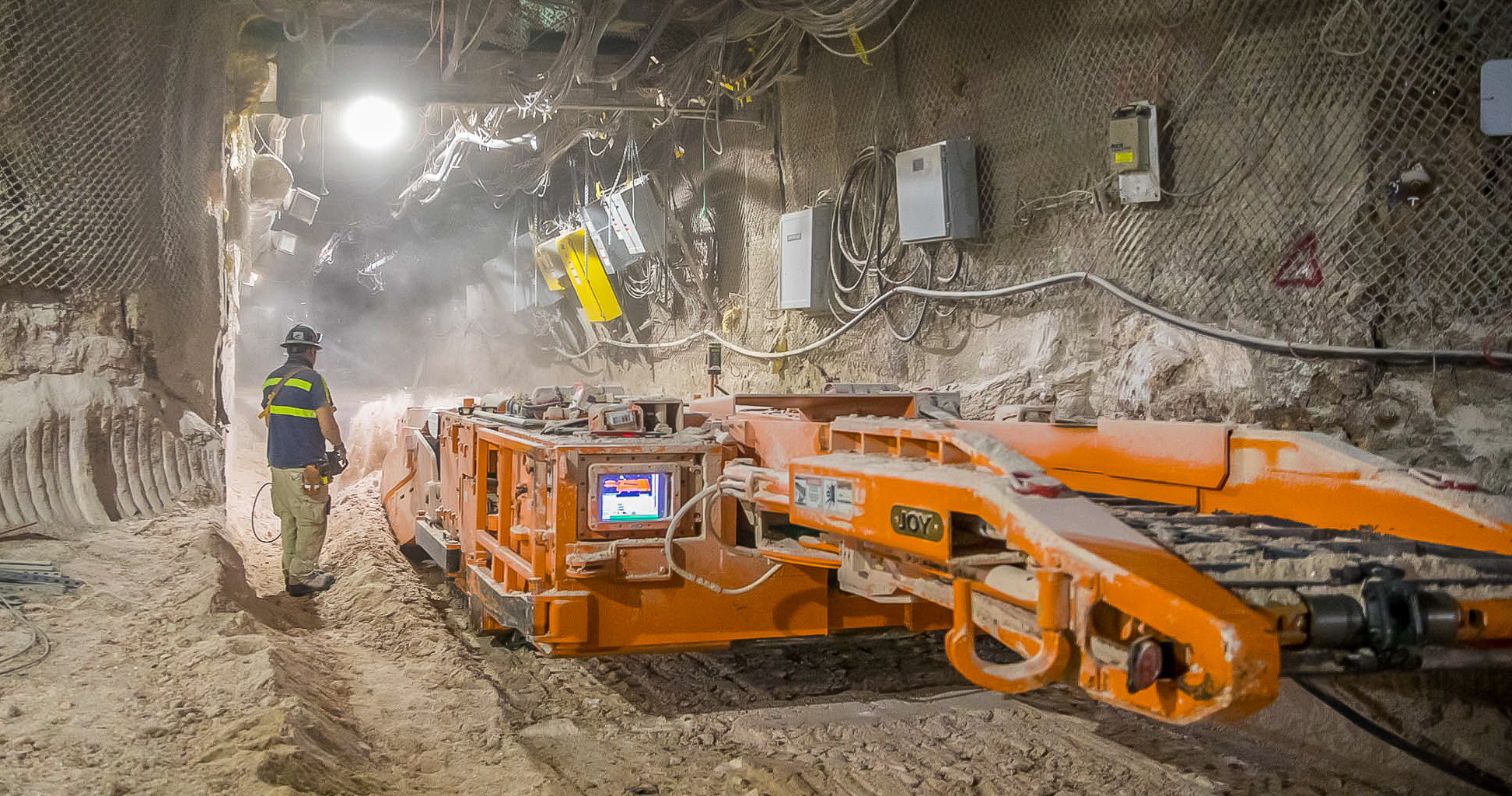WIPP SITE
The Waste Isolation Pilot Plant (WIPP) is the nation's only deep geologic long-lived radioactive waste repository. Located 26 miles southeast of Carlsbad, New Mexico, WIPP permanently isolates defense-generated transuranic (TRU) waste 2,150 feet underground in an ancient salt formation.
TRU waste began accumulating in the 1940s with the beginning of the nation's nuclear defense program. As early as the 1950s, the National Academy of Sciences recommended deep disposal of long-lived TRU radioactive wastes in geologically stable formations, such as deep salt beds. Sound environmental practices and strict regulations require such wastes to be isolated to protect human health and the environment.
Bedded salt is free of fresh flowing water, easily mined, impermeable and geologically stable — an ideal medium for permanently isolating long-lived radioactive wastes from the environment. However, its most important quality in this application is the way salt rock seals all fractures and naturally closes all openings.
Throughout the 1960s, government scientists searched for an appropriate site for radioactive waste disposal, eventually testing a remote desert area of southeastern New Mexico where, 250 million years earlier, evaporation cycles of the ancient Permian Sea had left a 2,000-foot-thick salt bed.
In 1979, Congress authorized WIPP, and the facility was constructed during the 1980s. Congress limited WIPP to the disposal of defense-generated TRU wastes in the 1992 Land Withdrawal Act. In 1998, the U.S. Environmental Protection Agency certified WIPP for safe, long-term disposal of TRU wastes.
On March 26, 1999, the first waste shipment arrived at WIPP from Los Alamos National Laboratory in New Mexico.
WIPP's disposal rooms are nearly a half mile below the surface (2,150 feet). By comparison, the Empire State Building is only 1,454 feet high.

